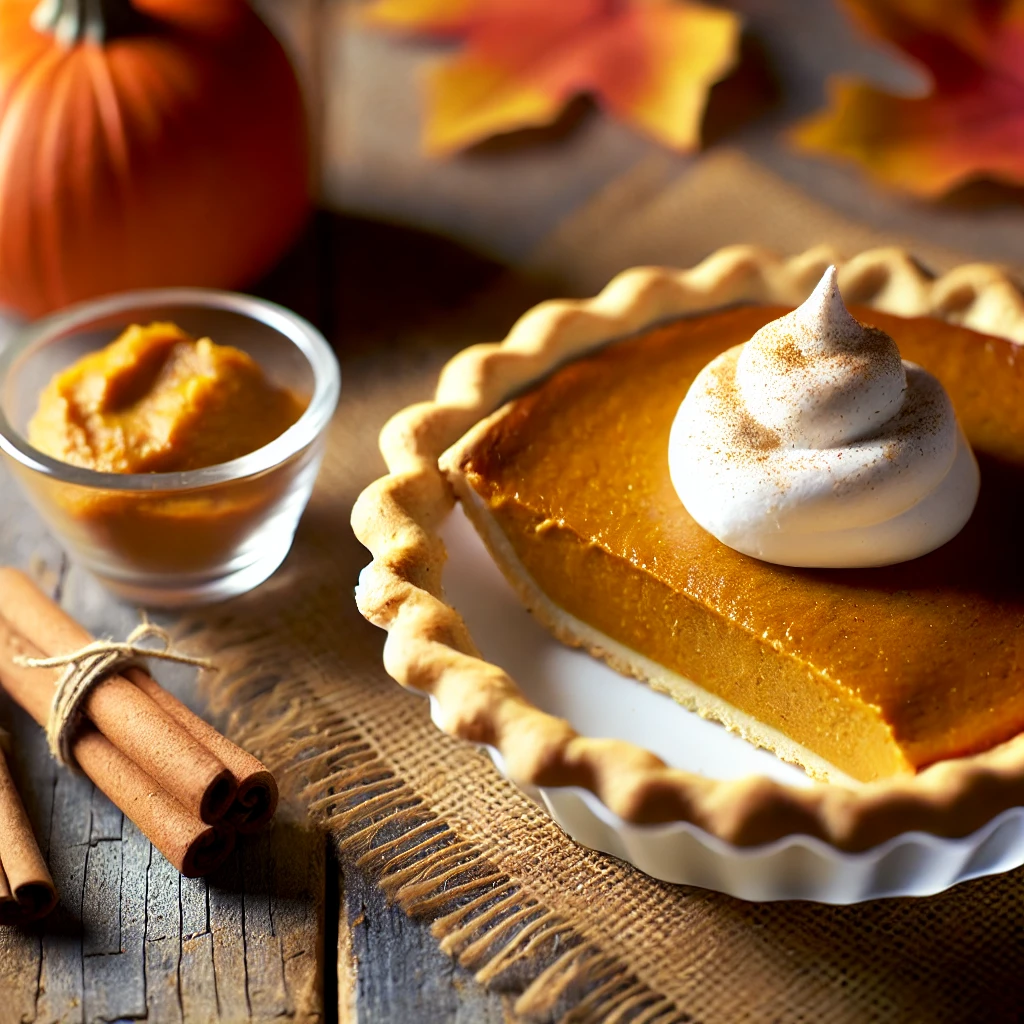Top Pumpkin Pie Baking Tips You Need to Know
Introduction
Pumpkin pie is more than just a dessert; it’s a timeless classic that embodies the warmth and coziness of the fall season. Its silky, spiced filling and flaky crust create a comforting blend that has made it a holiday staple. However, achieving that perfect balance between creamy filling and crisp crust requires a bit of know-how. Whether you’re a seasoned baker or a novice, refining your pumpkin pie skills can elevate your dessert game and impress your guests. That is why we are presenting these pumpkin pie baking tips.
Pumpkin Pie Baking Tips:
1. Choosing the Right Pumpkin
When it comes to pumpkin pie, the type of pumpkin you use can make a significant difference in flavor and texture. Fresh pumpkin has a vibrant taste but requires more preparation. Canned pumpkin, on the other hand, is convenient and consistent. The best varieties for baking include sugar pumpkins or pie pumpkins, which have a denser flesh ideal for smooth purees.
2. Preparing the Pumpkin Puree
Homemade pumpkin puree can provide a fresher, richer flavor compared to store-bought versions. To make it, cut the pumpkin in half, remove the seeds, and roast it until the flesh is tender. Puree the cooked pumpkin until smooth. To achieve the ideal consistency, drain excess water using cheesecloth, ensuring the filling won’t become too watery during baking.
3. Selecting the Best Pie Crust
A great pumpkin pie starts with the crust. While store-bought crusts are convenient, a homemade crust made with butter or a mix of butter and shortening offers a flakier, richer base. Butter gives flavor, while shortening provides structure. Chilling the dough before rolling it out helps prevent shrinking during baking.
4. Pre-Baking Your Pie Crust
Blind baking, or pre-baking the crust, is a crucial step to prevent the dreaded soggy bottom. To do this, line the crust with parchment paper and fill it with pie weights or dried beans. Bake until it’s golden brown, ensuring a crisp crust that complements the creamy filling.
5. Spices: The Key to Flavor
Pumpkin pie isn’t complete without a well-balanced spice blend. The classic combination includes cinnamon, nutmeg, ginger, and cloves. Adjust the ratios according to your preference—more cinnamon for warmth, or extra nutmeg for a nutty aroma. For those who love experimenting, try adding a pinch of cardamom or allspice for a unique twist.
6. Achieving the Perfect Filling Consistency
Eggs are essential in setting the pumpkin pie filling. Too few, and your pie may be runny; too many, and it might be overly firm. A proper balance ensures a creamy texture. Whisk the eggs thoroughly, but avoid overmixing as this can lead to a denser filling.
7. The Importance of Sweeteners
Sugar not only sweetens but also enhances the flavor profile of the pie. Brown sugar adds a hint of molasses, enriching the taste, while granulated sugar provides a cleaner sweetness. If you’re aiming for a healthier option, try maple syrup or coconut sugar, which can add complexity without sacrificing taste.
8. Properly Mixing the Ingredients
Overmixing the filling can cause it to be dense or even crack during baking. Combine the ingredients gently, and fold in the pumpkin puree last to maintain a light, airy texture. Following the right order—eggs, sugar, spices, then puree—ensures even mixing and the perfect consistency.
9.Baking Techniques for Even Cooking
The key to a perfectly baked pumpkin pie lies in controlling the oven temperature. Start baking at a higher temperature (around 425°F) for 15 minutes, then reduce it to 350°F. This method helps set the crust while allowing the filling to cook slowly, preventing cracks. Keep an eye on the pie to avoid over-browningThe Science of Cooling the Pie
Cooling the pie gradually is crucial to prevent the filling from separating or cracking. Allow it to cool at room temperature for about two hours, then refrigerate if needed. Rapid cooling can cause condensation, which may affect the texture and appearance of the pie.
Using a high-quality pie mold is essential for achieving a successful pie. A sturdy, well-made mold ensures even heat distribution, allowing the crust to bake uniformly, preventing soggy bottoms and undercooked centers. Opt for ceramic or metal pie molds with non-stick surfaces to easily release the pie after baking, preserving its shape and presentation. The right mold also helps maintain the crispness of the crust while providing the necessary support to hold the filling, ensuring your pie comes out perfectly every time.
10.Storing Pumpkin Pie
If you need to store your pie before serving, cover it loosely with plastic wrap and refrigerate it. Pumpkin pie can also be frozen for up to a month; simply wrap it tightly to prevent freezer burn. When reheating, use a low oven temperature to retain its creamy texture.
11.The Art of Decorating Your Pumpkin Pie
A beautifully decorated pie can be the star of any holiday table. Add a dollop of whipped cream, a sprinkle of cinnamon, or even a drizzle of caramel. Crushed pecans or roasted pumpkin seeds can also add a delightful crunch and elevate the presentation.
12.Adjusting for Dietary Restrictions
You can adapt pumpkin pie to fit your dietary needs. For a gluten-free version, use almond flour or a gluten-free baking mix for the crust. Dairy-free options include coconut milk or almond milk, which work well without compromising the pie’s creamy texture.
13.Troubleshooting Common Pumpkin Pie Issues
A runny pie or burnt crust can be disappointing, but they’re fixable. If the filling is too soft, try adding another egg or reducing the liquid next time. For burnt edges, use a pie shield or cover the crust edges with foil during baking.
14.Adding a Twist: Pumpkin Pie Variations
Pumpkin pie doesn’t have to be traditional. Adding chocolate swirls or a layer of maple pecans can transform the classic dessert into something new. Experimenting with flavors not only refreshes the recipe but also gives your guests a delightful surprise.
15.Seasonal Pairings: The Best Sides for Pumpkin Pie
Pairing your pumpkin pie with the right beverage enhances the experience. Serve it with spiced tea, coffee, or a glass of mulled wine. Adding a scoop of vanilla ice cream or a side of candied pecans also complements the warm spices of the pie.
16.Tips for Serving Pumpkin Pie
For neat slices, use a serrated knife and wipe it clean between cuts. If you’re reheating the pie, cover it with foil and warm it at 300°F for about 10 minutes to keep it moist.
17.Elevating Your Pumpkin Pie Experience
Elevate your pie by trying techniques like adding a caramelized sugar topping for a crème brûlée effect. For a gourmet touch, sprinkle edible gold leaf or finely grated dark chocolate over the top, creating a visually appealing and luxurious treat.
Conclusion
Mastering the art of pumpkin pie baking comes down to understanding each component and technique. From choosing the right pumpkin to perfecting the crust and spices, these tips provide a roadmap to create a dessert that’s both delicious and visually stunning. Embrace the process, and don’t be afraid to experiment—your perfect pumpkin pie is just a few steps away.


